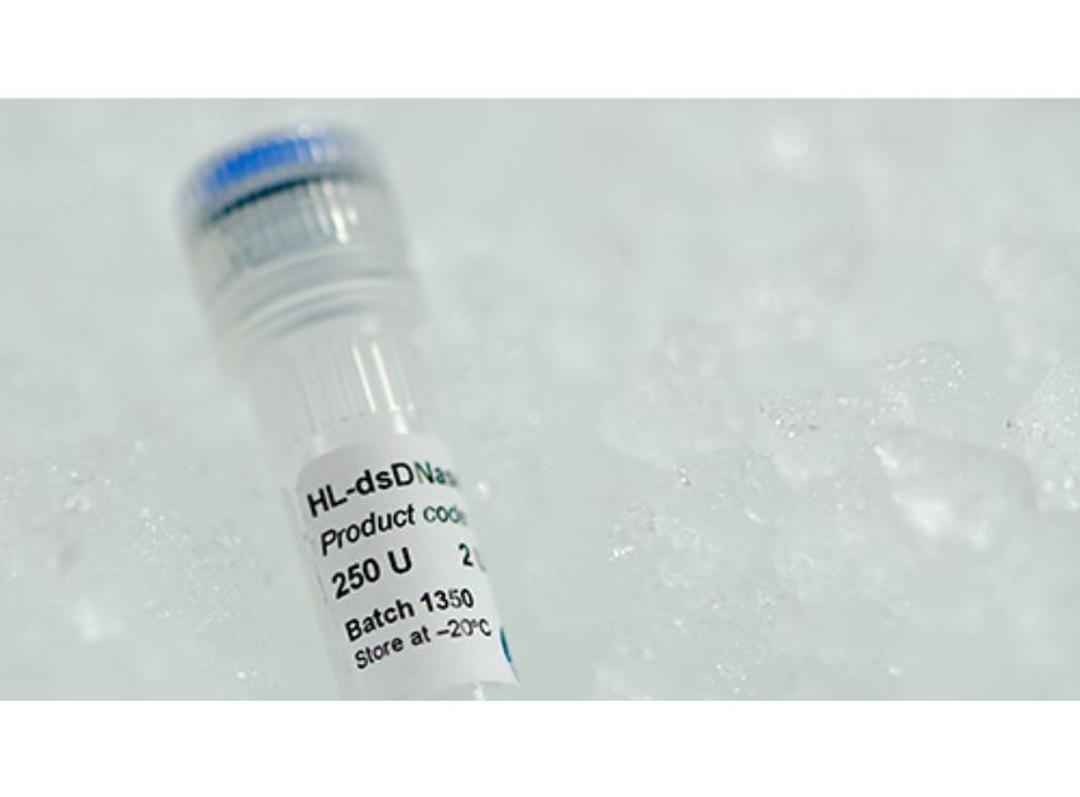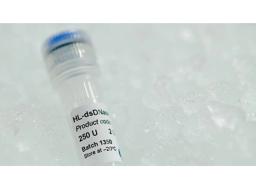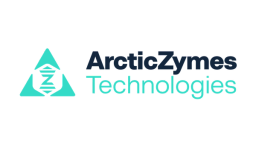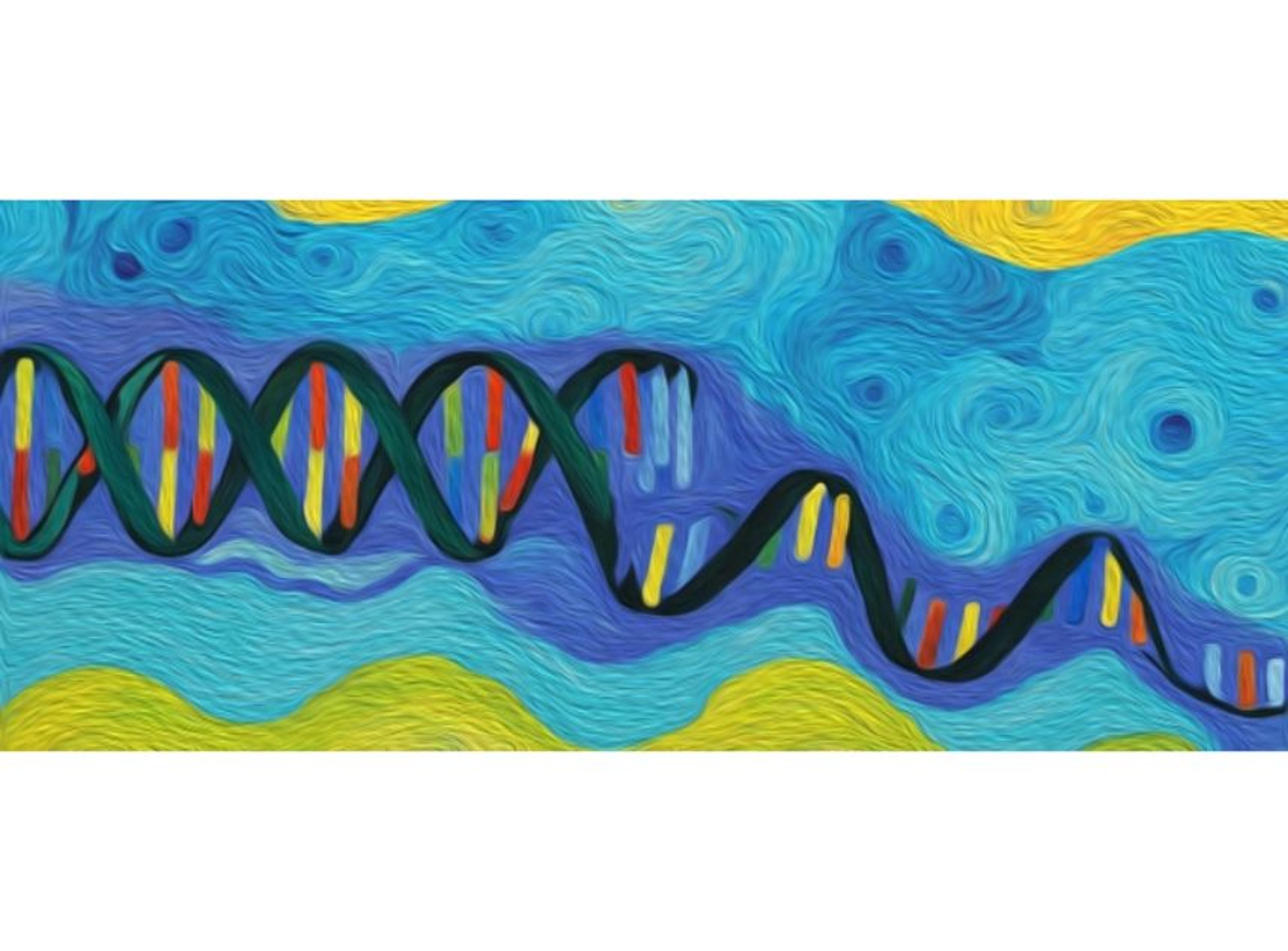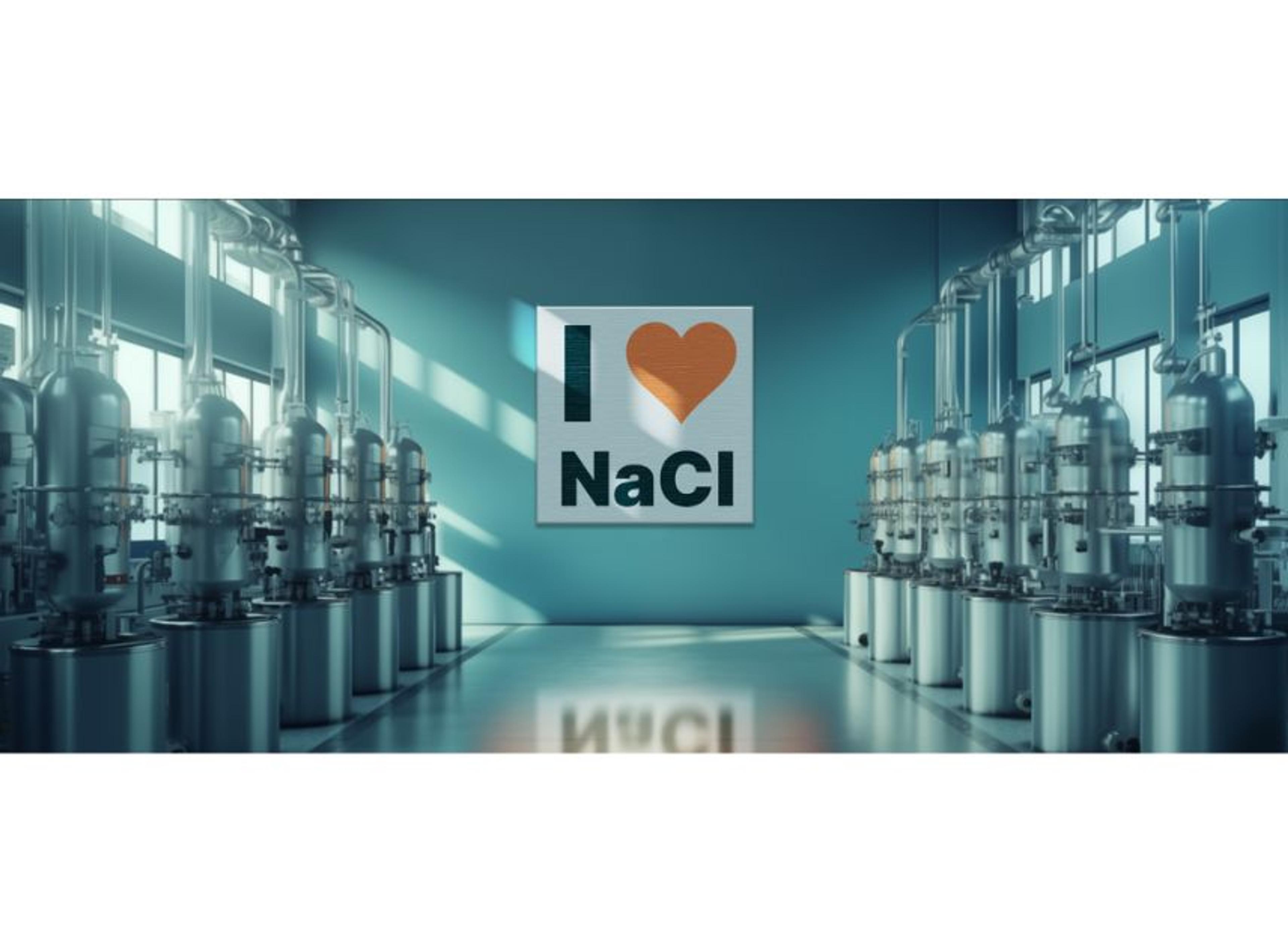Endonucleases DNA-specific, HL-dsDNase
HL-dsDNase efficiently removes genomic DNA from RNA with minimal impact on RNA quality, reducing 50 ng of gDNA to undetectable levels by qPCR. Easily inactivated by 5-minute incubation at 58°C, it’s ideal for RNA prep, minimizing degradation. It's also effective for removing external DNA from samples before metagenomic sequencing and STR-profiling, for fast, efficient alternative to traditional methods. Triton free available.
HL-dsDNase is especially developed to remove contaminating genomic DNA from RNA preparations. Figure 1 shows that HL-dsDNase can reduce 50 ng of human gDNA to levels non-detectable by qPCR. In figure 2, a humantotal RNA sample was treated with HL-dsDNase and analysed on the Bio-Rad Experion™ System. The resultsindicate that HL-dsDNase has minimal impact on RNA quality and quantity.
HL-dsDNase is an engineered version of dsDNase that is rapidly and completely inactivated by incubation for 5 minutes at 58°C with 1 mM DTT at pH 8.0 or above. Chemical inactivation in downstream compatible RT or PCR buffers allows milder heat inactivation and, in some cases, skipping heat inactivation altogether. This makes HL-dsDNase very useful for removal of DNA from RNA preparations since the enzyme may be inactivated using various strategies with reduced risk of auto-degradation ofRNA in the presence of magnesium, making HL-dsDNase an ideal enzyme when working with small volumens of RNA.
HL-dsDNase is also an excellent choice for removal of unwanted external DNA from samples prior to analysis of nucleic acids protected by biological membranes, e.g., bacteria, viruses, and sperm. Especially if using downstream analysis methods that might be affected by host cell DNA, as metagenomic sequencing and STR-profiling. The easy inactivation of HL-dsDNase makes it a fast and efficient alternative to methods as differential extraction, where sample material is often lost.
Recommended applications:
- Removal of genomic DNA from RNA preparations
- Improved removal of host-cell DNA from sperm cells prior to STR-profiling
Key advantages with HL-dsDNase:
- Double-strand DNA specific endonuclease
- Easily heat-inactivated by very moderate heat treatment
- High specific activity
- Useful for removal of DNA from RNA preps
- Avaialble in Glycerol-free and Triton-Free


